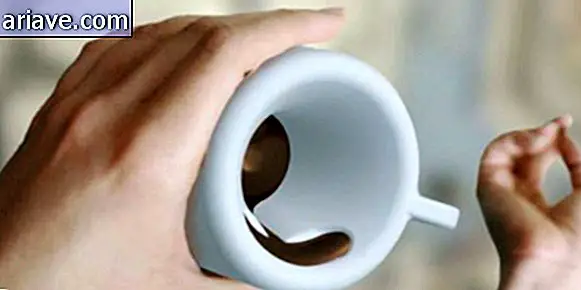How traffic sobriety tests work
We hope you never drank and drove, so let's suppose you only heard this phrase in movies: "Did you drink tonight?" Police officers can ask this to any driver they think is drunk, and may even perform some tests with the suspect - before sending him to the breathalyzer or other tests.
Much more common in the United States, sobriety tests may seem like a big joke, but they do involve results that may actually show traces that you've been drinking more than you should. Check out some more about some of the top alcohol detection tests now. All are approved by the NHTSA ( National Highway Traffic Safety Administration ).
HGN: Horizontal Eye Nystagmus
For those who do not know, nystagmus is an involuntary movement that the eyes make for several reasons, including excessive alcohol in the blood. They can be seen in anyone's eyes, especially when the pupils are near the extremities. When someone is drunk, nystagmus can be perceived with much more subtle movements.
Police officers may use pens or flashlights to draw a horizontal route in front of the suspect's eyes. If the angle at which the eyes begin to vibrate is less than 45 degrees from the center, it is very likely that the eye is actually drunk. According to NHTSA data, in 88% of cases of irregular nystagmus, the amount of alcohol is above allowable.
Walk and spin
“Walk the line, taking nine steps with one foot after another, looking down and counting out loud. At the end of the steps, rotate on its own axis and come back repeating the action. ” There is a part of the central nervous system that is called the striated body. This region is responsible for what Gizmodo calls “brain multitasking”.
This test in the United States has a 79% hit rate. Alcohol inhibits the ability to control multiple functions at once. Therefore, some flaws in this test may make the suspect very clear that he is drunk. Are they:
- Failing to balance while instructions are given;
- Begin the test before instructions are completed;
- Stop to resume balance;
- Do not touch heels and toes;
- Step out of line;
- Use the arms;
- Spin the wrong way;
- Miss the amount of steps.
Stop on one leg
This test is simpler, but also has a large margin of success: 83%. Police officers may ask suspects to stand, lifting one foot to heights close to six inches. There are four indicators of alcohol poisoning: instability in balance, use of arms, jump and return to the floor.
As reported by Gizmodo, after the three tests together, there is a 91% accuracy rate in police diagnostics. There are also other exams that are less commonly used but are worth mentioning in this regard. Let's go to them.
Rhomberg Balance Test
This test is widely used when police are not sure which drug the suspect consumed. The person is instructed to stand, close his eyes, lay his head back and silently mark the 30 second period.
In addition to analysis of body expression that is common to other tests, the time taken to count to 30 may indicate the presence of substances. While alcoholics will take a long time to complete, people who have taken stimulants will do the same in less time.
Finger in the nose
Calm down, it's not what you're thinking. This test consists of posting the suspect standing with their feet together and eyes closed. When the policeman orders, the alleged drunkard should bring his finger to the tip of his nose. The main traces of alcoholism in this case are: muscle tension, tremors, imbalance and, of course, missing the nose.
.....
When either test points to the presence of alcohol in the blood, suspects are referred to responsible institutes for more specific tests. In Brazil, for example, the breathalyzer can give the alcohol dosage instantly, but in the USA it is necessary to collect blood.
Sources: National Highway Traffic Safety Administration and Gizmodo











